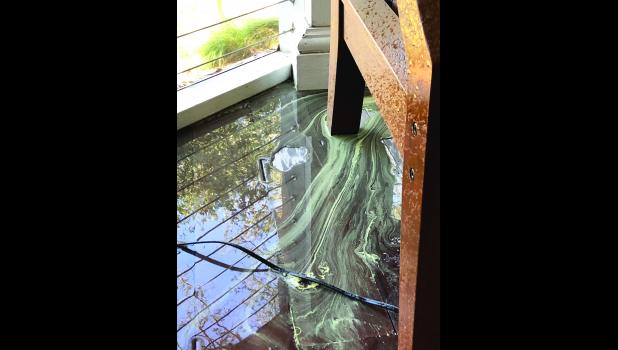Dust in the wind
Wed, 03/03/2021 - 9:47am
admin
By:
Frank Conway
The symptoms were unmistakable. We have certainly had enough experience recognizing them. My theory was confirmed on a walk around Smythe Lake. It was February, and the water at the lake’s edge was covered with a yellowish film of very fine powder.
Here we go again with another pollen season. How can something so tiny make millions of people so miserable? My family seems to have finally found our “groove” with preventative saline rinses, nasal sprays and, when necessary, over-the-counter medications.
Years ago, I had accepted that I would probably get sick twice per year and require medical care, typically for a sinus infection, once. That’s not ideal for someone who makes his living flying airplanes, and I am glad those days are behind me.
But this is a nature article, and pollens — these magnificent, tiny, and sometimes maddening particles blowing all around us — are responsible for gigantic trees, beautiful flowers and making our natural world function. Unfortunately, the yellow-coated puddles, cars and sidewalks, and millions of red human eyes, just seem to be part of the deal.
Plants make pollen for reproduction. Probably the best-known pollination path is through bees. Pollen is a sticky powder produced by the male part of a flower (stamen). For pollination to occur, the pollen must get to the stigma at the top of the female part (pistil). Fortunately, there are many creatures willing to help. Bees, wasps, butterflies, hummingbirds and even humans can transport pollen, whether unintentionally or on purpose. Brightly-colored, and sometimes sweet-smelling flowers tend to attract the various creatures to where they perform their valuable services.
A plant whose own pollen is used is “self-pollinated,” while a plant which receives pollen from another plant is “cross-pollinated.” Some plants can produce fruit through self-pollination and some cannot.
Tree pollen is perhaps the worst allergen for us in the Lowcountry, according to a 2018 Post and Courier article by Lauren Sausser. Dr. Maria Streck of MUSC said in the piece that she recommends her tree allergy patients begin their medications around Valentine’s Day and continue through Mother’s Day.
So, what’s out there? The Charleston ENT & Allergy website (charlestonent.com) states that our tree pollen ramps up in February to March and runs through June. Grass pollens become a factor in late spring to early summer and the overlapping period in May is probably our worst time for pollen overall.
We have all seen the clouds of pollen blowing from our trees in the spring. In the fall, weed pollens become common. I must admit that, even knowing all of the good it does, I have a hard time embracing pollen season. But whether you are reading the biblical book of Ecclesiastes or listening to “Turn, Turn, Turn” by the Byrds, “To every thing there is a season” rings true. And in coastal South Carolina, pollen is definitely a “thing.”



